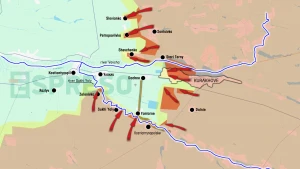
Toward full robotization of Ukraine's Armed Forces
We essentially need to train the entire army, without exception, in drone operations. The goal is to make the Armed Forces completely robotic
The restructuring of the Armed Forces is necessary to align with the current demand for drone utilization.
Drones have emerged as the primary weaponry and military equipment due to various factors. While shortages in traditional weapons play a role, drones lead due to their affordability, simplicity, and intelligence capabilities.
For some time now, drones have served as the primary tool for reconnaissance and intelligence gathering, crucial for commanders' situational awareness.
They've now evolved into the primary weapon for engaging enemy units. Not machine guns, not mortars, not artillery with its low rate of fire, not tanks with their vulnerability - FPV-copters, functioning as kamikaze drones and bombers, hold significant promise for Ukraine, considering international, political, and economic factors.
Consequently, frontline units must revolve around drones as their primary offensive tool. Infantry, mortars, machine guns, sappers, anti-aircraft defense, and artillery should support drone operators, enhancing their effectiveness and firepower. Intelligence, communication, repair, and logistics efforts must prioritize facilitating drone operations. Radio engineering intelligence and electronic warfare specialists should integrate into drone units and operate under their command.
Such a shift requires significant management changes. Commanders of motorized infantry or mechanized battalions must effectively lead air, water, and ground drone units, necessitating appropriate training programs encompassing both remote and in-person components.
In essence, the entire army needs to be retrained for drone operations to achieve full roboticization of the Armed Forces.
This transition would greatly benefit from the General Staff's receptiveness to innovative military reforms. The evolution of technical capabilities outpaces structural changes in combat units, leading to a networked approach to combat initiatives. Engaging effectively with this network is essential for confronting Russian forces on multiple fronts, including intelligence, destruction, ELINT, and EW operations. Thus, effective interaction within this network is crucial for success.
About the author. Ihor Lutsenko, journalist, Ukrainian Armed Forces soldier.
The editors do not always share the opinions expressed by the blog authors.
- News












































